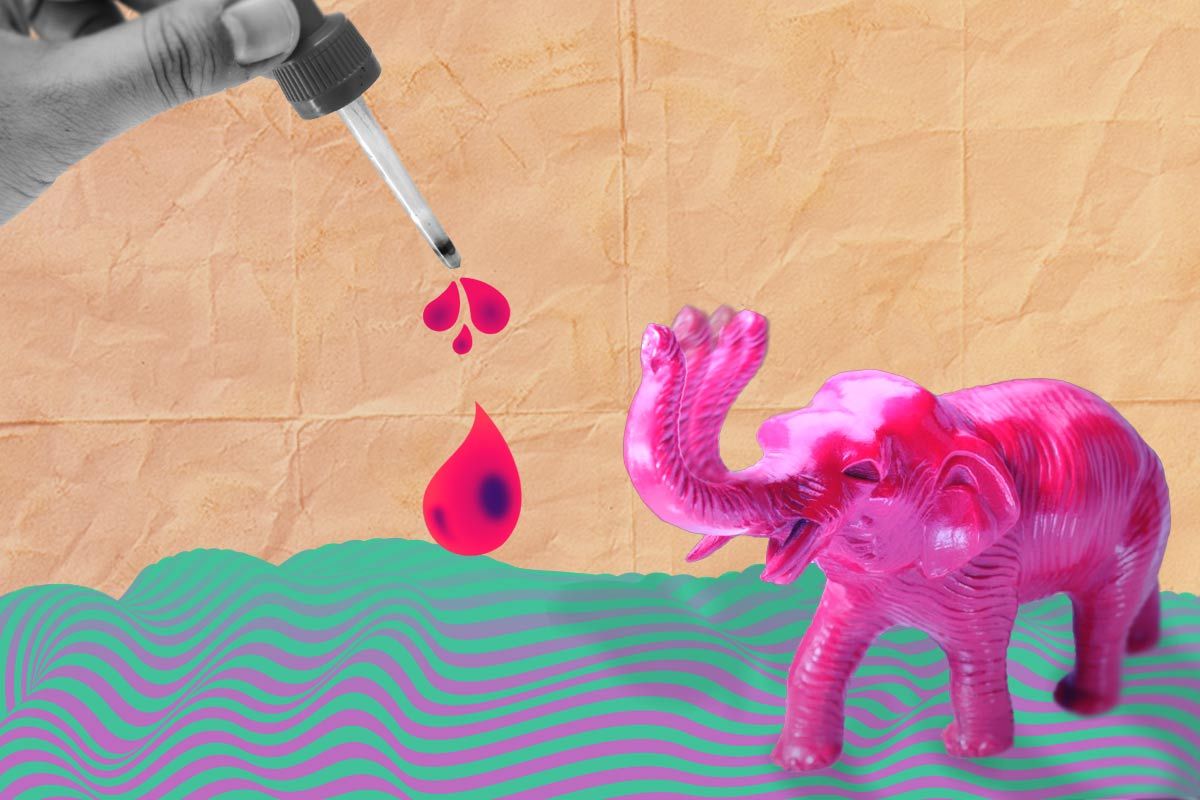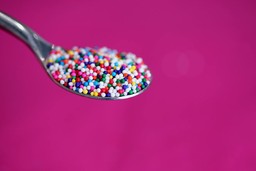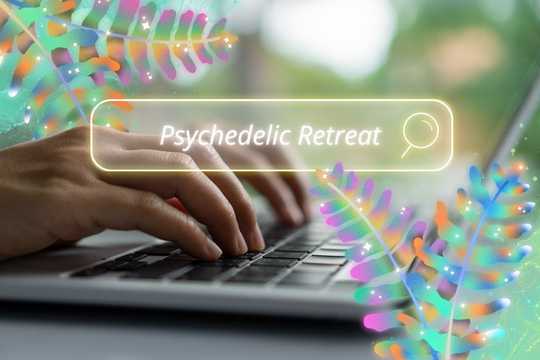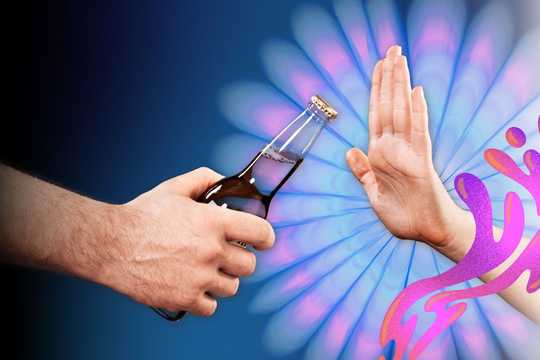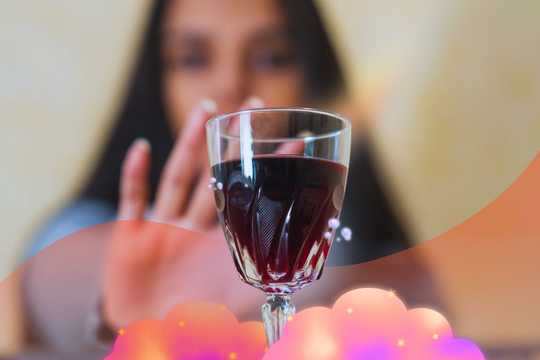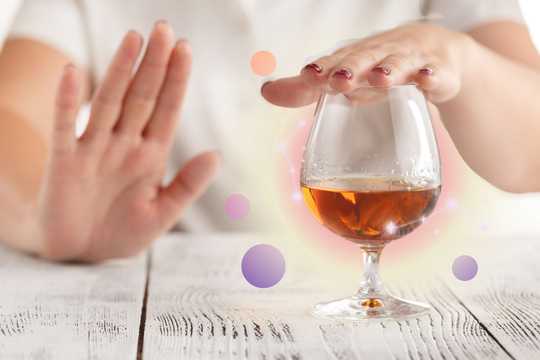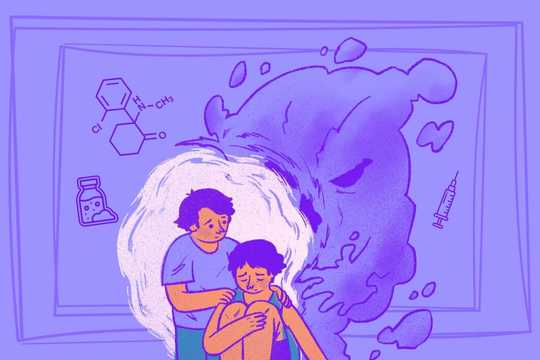Microdosing is an increasingly popular way to take psychedelics, with a range of practitioners and organizations promoting the practice. But is it effective? Join Zeus Tipado in an exploration of the psychedelic microdose: the appeal, the science, and the impact.
Imagine we’re all living in a zombie apocalypse. You’ve been bit and have only five days until you turn into another member of the walking dead. The remaining scientists on the planet discovered a plant that has the ability to cure all zombification illness but the plant must be eaten in its entirety to have this effect. Finally, someone hands you this life-saving plant – and despite the enormous scientific evidence surrounding the consumption of the entire plant, you choose to consume a small amount every day because a ‘coach’ says you should just eat a little bit every day to feel only slightly better.
You wouldn’t survive long in the zombie apocalypse, but in this new ‘psychedelic renaissance’ we’re all in, you would undoubtedly get roped into the microdosing fad that’s spreading across social media. If I told you that within your reach is a substance that can’t be felt but has the ability to decrease depression and anxiety, enhance cognitive focus, boost positive behavioral-actions, and increase your general happiness – why wouldn’t you want to hop on board? The promises surrounding microdosing are appealing, and these claims come from ‘accredited’ coaches in the psychedelic community. In fact you can visit your favorite psychedelic sites and find microdosing courses readily available for purchase, often with claims of ‘spiritual awakeness,’ ‘inner enlightenment,’ letting go of ‘limited beliefs,’ ‘performance hacking,’ and my personal favorite: ‘resonate with the vibration of Mother Earth.’
Follow your Curiosity
Sign up to receive our free psychedelic courses, 45 page eBook, and special offers delivered to your inbox.Those are all real claims from just one start-up microdosing company, but there are many popping up across the world and just about all of them have similar promises. Could microdosing be the game-changing solution you’ve always wanted? Probably not. Katrin Preller of University of Zurich said it best in one of her studies on microdosing:
‘There is no reason to believe that substances like LSD that impair cognition at active doses would magically enhance concentration when used at lower doses.’
It doesn’t take much effort to just say ‘you’re being lied to.’ It’s an effective statement that requires little substance behind it, like microdosing. So instead, I’ll show you the rigorous science from the top researchers on the planet and give strong evidence backing my claim – unlike microdosing.
With microdosing, the general rule is if you can feel the effects of the psychedelic, then you’ve taken too much. Microdosing operates on a sub perceptual basis, which means it’s designed to never be felt. I spoke to sociologist Dimitrios Liokaftos about the suspicious nature of microdosing innate ‘sub perception:’
‘Unlike other use modalities, microdosing’s effect is supposed to be barely noticed by the user. In other words, if you start really feeling the effects of the psychedelic substance you’ve probably used more than a microdose. This is why it potentially lends itself particularly well to an imagined effect.’
Generally a microdose is anywhere from 1/10th to 1/20th of a normal psychedelic dose, and just about every psychedelic can be microdosed. Keep in mind, the ‘normal dose’ of psychedelics is a topic of high interest in pharmacology and neuroscience. A tab of LSD is usually 100 micrograms, or 100μg. This means the sub perceptual microdose of LSD is somewhere between 10μg and 5�μg – the level of concentration it takes to slice a single square of LSD into ten equal parts deserves some recognition.
To frame microdosing as beneficial, we must first look at the scientific evidence behind the practice. Otherwise, we would have no structure to ‘reframe’ microdosing. The movement would just be constructed on flimsy data, rumors, and marketing – and surely that can’t be the case with a movement that has so many venture capitalists behind it.
The Science of the Microdose
The first study into microdosing was conducted by Rachel Horsley at Charles University in 2018. Results of the experiment showed little evidence that microdosed amounts of psychedelics have any beneficial cognitive effects. The researchers even stated that ‘microdosing with hallucinogens for therapeutic purposes might be counter-productive.’ However in science you never rely on a single finding. The scientists at Charles University encouraged more research into the microdosing phenomenon – and it happened.
The following year, researchers at Virginia Commonwealth University conducted an innovative study that showed the effects psychedelics have on reducing opioid-induced depression was dose-dependent, and that LSD consumed at ‘microdose’ levels were completely ineffective. ‘Dose-dependent’ is a phrase you see often in psychedelic research, especially when studies are conducted that focus on microdosing. It’s an indicator that neurological and cognitive effects of psychedelics are seen and also increase according to the amount that is consumed.
Both the biological and subjective effects of psychedelics seem to have a direct relationship, which means as one goes up the other does as well – like two friends refusing to deescalate an argument over which Matrix is the best.
Neurobiological processes like increased 5-HT2A (serotonin receptors) binding, neuronal repair in the medial prefrontal cortex, and the Default Mode Network (DMN) spilling over into the Central Executive Network (CEN) – all of these mechanisms have a direct relation with the measured subjectivity of psychedelics. Things like an increase in scores of the Five Dimensions of Altered States of Consciousness (5D-ASC), a scale used by psychologists to determine the strength and quality of a psychedelic trip. Of course, you can just ask a person while they’re tripping – I’m sure they’ll be happy to tell you.
One particular neuromechanical process discovered by Yale scientist Ling-Xiao Shao called ‘spinogenesis’ has a correlational effect with a decrease in depression when acute doses of psilocybin were introduced to neurons. Shao found dendritic spines of neurons in the brain, the part of the neuron that transfers signals to the postsynaptic terminal, were strengthening and repairing themselves from atrophy caused by stress-related behavior, anxiety, and depressive symptoms. The findings were dose-dependent, with only higher doses producing this effect. The smaller, sub perceptual microdose amounts were ineffective.
The therapeutic benefits of psychedelics are associated with two things: a neurobiological process along with the felt subjective experience. The direct relation is so strong that perhaps the perception of the trip, the subjective experience, may also be vital in psychedelics. I spoke with University of Zurich’s Katrin Preller about how psychedelics may leave a positive cognitive impact:
There are many hypotheses speculating why they may have a positive impact on patients – however most of them have not been tested yet. Nevertheless, some hypotheses suggest that the conscious experience is necessary or at least helpful, while others focus on a purely biological mechanism of action. If the psychedelic experience is indeed necessary, it is unlikely that a microdose will have positive effects in patients (unless it works via a different mechanism of action).
If the perception of the trip is necessary in psychedelics, microdosing’s sub perceptual nature would be its own undoing. However it may not be so clear cut. Preller brings up a great point – microdosing could operate through a different mechanism of action. A non-pharmaceutical one called ‘placebo effect.’
The Placebo Effect and Microdosing
One of the largest studies ever conducted on psychedelics was done by Imperial College London at the beginning of 2021. In this groundbreaking study, they tested nearly 200 participants with either a placebo or microdose of LSD or psilocybin. Researchers found that microdosed amounts were as effective on mood and behavior as placebo. Participants in the experiment were double-blinded, meaning they didn’t know whether they were taking the microdosed psychedelics or the non-active placebo. People self-reported feelings of decreased depression and anxiety, and a reduction of stress-related behavior in both the placebo and microdosed psychedelic. There was no statistical difference. The belief that participants may have cognitive benefits from the study was enough for people to experience the feelings they anticipated. While we can write the placebo effect off as ‘it’s all in your head,’ it’s actually a strong testament to how much control humans have over their own cognitive and behavioral regulation.
The Appeal of the Microdose
Let’s venture to an interesting topic: why would people choose microdosing over just regular dosing? Why would a person choose to make something that’s clinically effective become ineffective by lowering the dose to a miniscule amount?
The obvious answer is people don’t want to trip – the sub perceptual nature of microdosing is appealing to them. They would get all the cognitive benefits of psychedelics without the bizarre face melting and self-transforming machine elves.
It’s a bit more complex than that. Megan Webb of University of California, Riverside conducted a sociological study that analyzed thirty people that had previously microdosed. The purpose was to better understand peoples’ attitudes towards their own microdose practice – and what Webb found was interesting. The attitude people have towards microdosing is to create social boundaries between them and ‘drug takers.’ They believed microdosing was a way for them to maintain their connection with ‘traditional middle-class values’ and allowed them to ‘normalize their drug use.’
Sociologist Dimitrios Liokaftos conducted a study to investigate the phenomenon of microdosing and came to a similar conclusion.
This is a finding of previous qualitative research (Webb et al. 2019), which my own data to date also confirm. I would argue that, interestingly, even the use of full doses (proper trips) sometimes also gets framed in a similar way. A research participant of mine, for example, told me that sometimes they go on full-dose trips in a recreational, unplanned way while other times they very instrumentally plan their full-dose trips (including preparation and integration) with the clear intention of working on specific things (e.g. an emotional or behavioural issue they have identified in themselves).
This is an interesting point that Liokaftos brings up. Sometimes the intent of full-dose psychedelic users are the same as those that microdose. In Webb’s study, they found that even regular psychedelic users create social boundaries, with the belief that their use of psychedelics distinguishes themselves from other drug takers who they consider to be ‘crackheads,’ ‘meth heads.’ Humans creating boundaries to distinguish ‘us’ versus ‘them,’ the oldest play in the civilization handbook.
The Verdict on Microdosing
The truth is we don’t fully understand the clinical mechanisms of how people feel what they feel while they’re on psychedelics. It’s an area of relentless research – even the effects of a full psychedelic dose could be attributed in part to non-pharmacological means like placebo effect and expectancy effect. Psychedelics could also operate on a neurobiological process that our current science isn’t sophisticated enough to understand. All these scenarios could be true – but we must look at the abundance of psychological, neuroscientific, pharmacological, and sociological evidence that has been amassed by researchers which have dedicated their careers on producing the most accurate science with often the greatest instruments and scales at their utilization. Considering all the data that’s accessible regarding microdosing and the extremely low and nominal effects it has, it seems to be absolutely ridiculous to assert the claims that microdose providers state.
Microdose companies should shift their claims of ‘spiritual awakening’ and ‘cognitive enhancement’ to ‘Yeah, we really don’t know what’s happening here but you can open your wallet, take our course, and you may or may not feel better.’ That would be a more scientifically accurate mission statement.
References
Horsley, R. R., Páleníček, T., Kolin, J., & Valeš, K. (2018). Psilocin and ketamine microdosing: effects of subchronic intermittent microdoses in the elevated plus-maze in male Wistar rats. Behavioural pharmacology, 29(6), 530-536.
Liokaftos, D. (2021). Sociological investigations of human enhancement drugs: The case of microdosing psychedelics. International Journal of Drug Policy, 103099.
Preller, K. H. (2019). The effects of low doses of lysergic acid diethylamide in healthy humans: Demystifying the microdosing of psychedelics.
Sakloth, F., Leggett, E., Moerke, M. J., Townsend, E. A., Banks, M. L., & Negus, S. S. (2019). Effects of acute and repeated treatment with serotonin 5-HT2A receptor agonist hallucinogens on intracranial self-stimulation in rats. Experimental and clinical psychopharmacology, 27(3), 215.
Shao, L. X., Liao, C., Gregg, I., Davoudian, P. A., Savalia, N. K., Delagarza, K., & Kwan, A. C. (2021). Psilocybin induces rapid and persistent growth of dendritic spines in frontal cortex in vivo. bioRxiv.
Szigeti, B., Kartner, L., Blemings, A., Rosas, F., Feilding, A., Nutt, D. J., … & Erritzoe, D. (2021). Self-blinding citizen science to explore psychedelic microdosing. Elife, 10, e62878.
Tagliazucchi, E., Roseman, L., Kaelen, M., Orban, C., Muthukumaraswamy, S. D., Murphy, K., … & Carhart-Harris, R. (2016). Increased global functional connectivity correlates with LSD-induced ego dissolution. Current Biology, 26(8), 1043-1050.
Vaidya, V. A., Marek, G. J., Aghajanian, G. K., & Duman, R. S. (1997). 5-HT2A receptor-mediated regulation of brain-derived neurotrophic factor mRNA in the hippocampus and the neocortex. Journal of Neuroscience, 17(8), 2785-2795.
Webb, M., Copes, H., & Hendricks, P. S. (2019). Narrative identity, rationality, and microdosing classic psychedelics. International Journal of Drug Policy, 70, 33-39.
